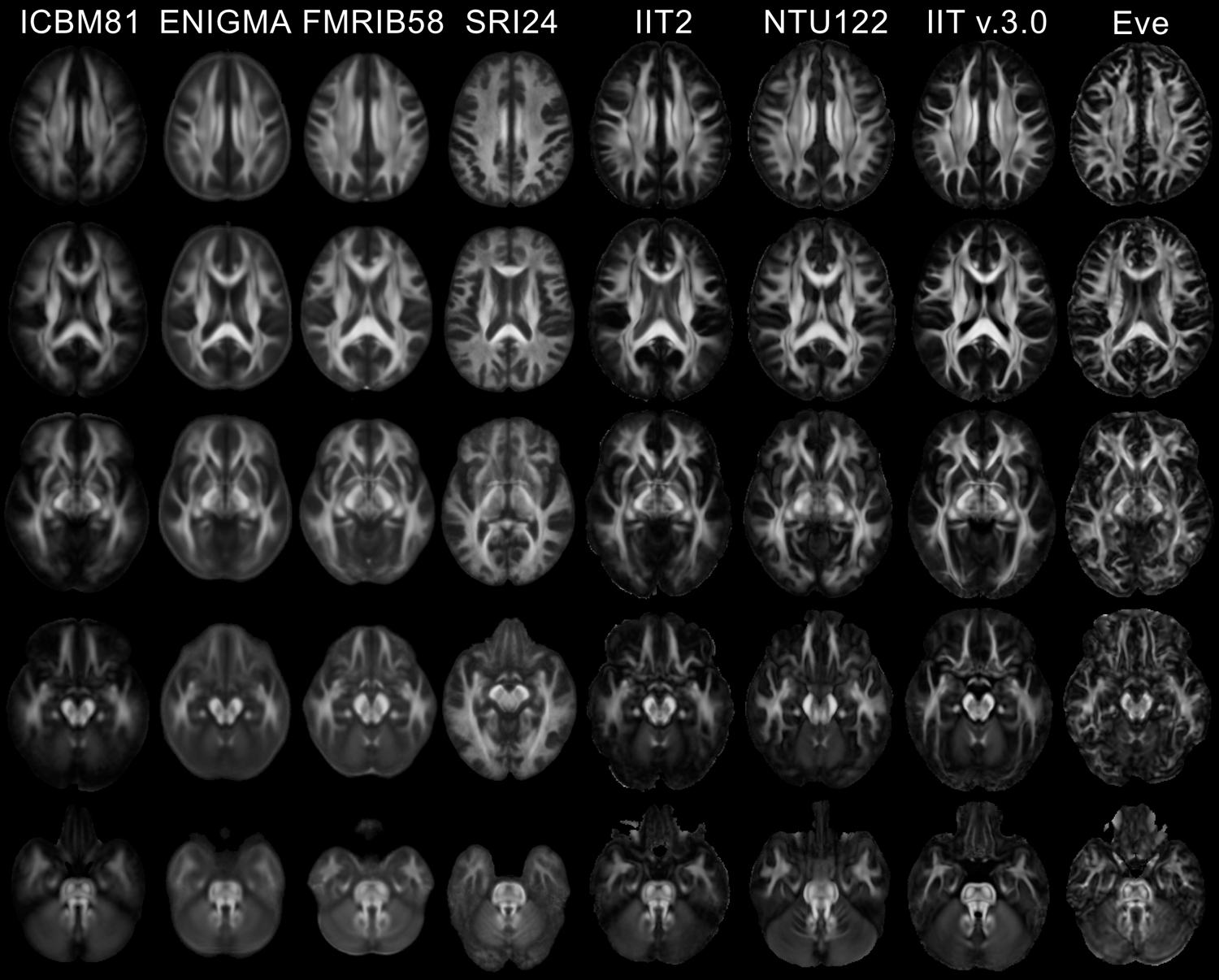Overview
- an effective tensor-based registration algorithm,
- high-quality DTI data,
- a high-quality template representative of the data on individual subjects.
Accurate spatial normalization in DTI requires:
The following focuses on the latter and A) compares the quality of available standardized DTI brain templates, and B) discusses results of recent studies on the performance of standardized and study-specific DTI templates.
Comparison of available standardized DTI brain templates

- The IIT v.3.0 template (Varentsova et al., Neuroimage 2014) is a population-based template with high image sharpness (small white matter structures are visible), high SNR, FA values and spatial features that are similar to those of individual subjects (compare to Eve, which is a single subject). Since it was constructed based on artifact-free data from 72 healthy subjects, the IIT v.3.0 is more representative of the general population than single-subject templates (e.g. Eve).
The Eve template (Oishi et al., Neuroimage 2009) is a single-subject template, has high image sharpness (small white matter structures are visible) and high SNR. However, it is a single-subject template and is not representative of the general population.
The ICBM81 template (Mori et al., Neuroimage 2008) is a population-based template, but is blurrier and has generally lower FA values than IIT v.3.0. This could be due to misregistration across subjects during the construction of that template or due to the wide age range of the participants.
Enigma (Jahanshad et al., Neuroimage 2013) and FMRIB58 (FMRIB, Oxford, UK) are population-based templates, but are also blurrier and have generally lower FA values than IIT v.3.0 (again due to misregistration and a wide age-range). In addition, these are FA-only templates, which means that they don't allow tensor-based registration.
SRI24 (Rohlfing et al., Hum Brain Map 2010) is a population-based template that is blurrier and has generally lower FA values than IIT v.3.0. In addition, SRI24 has an atypical FA map.
IIT2 (Zhang et al., Neuroimage 2011) is a population-based template built using the same data as IIT v.3.0. However, it is blurrier than IIT v.3.0 because normalization across subjects was not based on tensor registration.
NTU-DSI-122-DTI (Hsu et al., Hum Brain Mapp 2015) is a population-based template that is blurrier than IIT v.3.0, and additionally is missing small features such as the anterior commissure and the optic chiasm, and suffers by pronounced ghosting of the pons anterior to the actual structure.
Conclusion on the comparison of available standardized DTI brain templates
The IIT v.3.0 DTI template is a population-based template that is most representative of the characteristics of individual DTI data. As a result, tensor-based registration to the IIT v.3.0 DTI template leads to higher spatial normalization accuracy and, therefore, higher accuracy for DTI studies. For more information see Zhang & Arfanakis (Neuroimage 2018).

